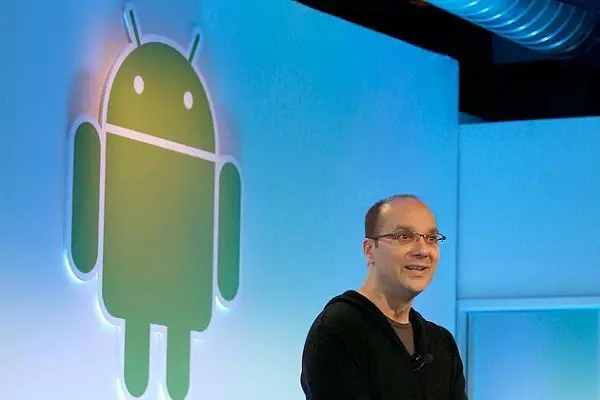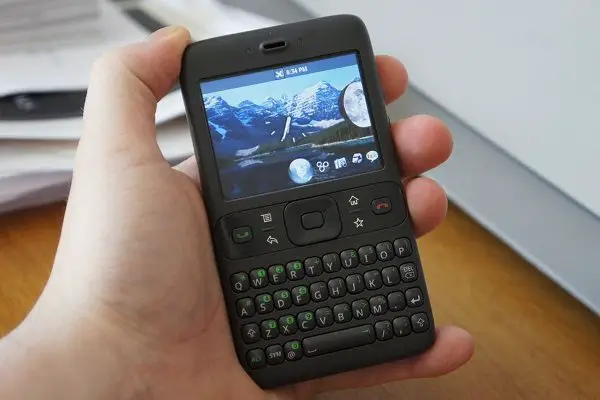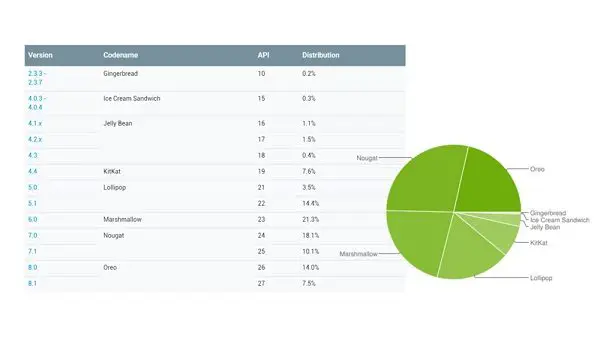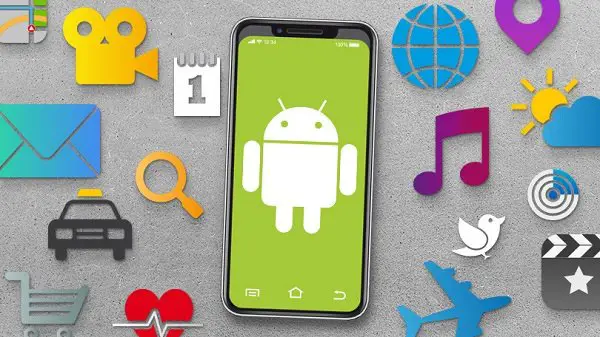Android, Android, and Android. The more you see the world and tech around yourself, they all look powered by Android. It might not be perfect for all cases, but if you look at the history, this is one thing which has grown multifold. Today, I am going to share you the top things you didn’t know about Android
Things you didn’t know about Android
The world today is turning out to be a place where we cannot live without the internet and all the gadgets around us. Right from smartphones to smart rooms, everything around us, at one point in time is going to get the “Smart” tag.
But, where did all these begin from? Who were the people involved in taking our lives to what we see today? Google, Apple, Samsung, Android, IBM and all other major and minor companies have been taking part in this right from the start. This consumer based industry can claim comfortably that it has evolved faster and bigger than any industry in the world. While every single company involved has done their part in the development, its one single company, ANDROID, started by Andy Rubin in 2003, that played the major role in revolutionizing the Smart World.
- Android started as an Advanced operating system for digital cameras
- The First Android Device was from HTC
- Early Days of Android
- Google Android’s Sweet naming convention
- More than 2 billion devices now running on Android
- Android Pie, AI, Digital Wellbeing, Smart Home, Future
Starting from Android 1.0 released in 2008 to the latest version Android 9 ‘Pie’, in this article, we are giving you a brief description of everything that has happened with Android.
1] Android started as an Advanced operating system for digital cameras
Andy Rubin, the founder of Android, was attracted to gadgets right from his childhood days. His father, who ran a company which used to photograph the latest gadgets played a major role in this. Completing his graduation in Computer Science from Utica College, New York, Andy ran a Computer bulletin board system. Later he joined Carl Zeiss AG as a Robotic engineer, but his dream at that time was to work at Apple Inc. He worked for Apple from 1989 to 1992 and in the later years worked at General Magic and MSN tv.

Andy’s first big breakthrough came when he, along with Matt Hershenson and Joe Britt founded the Danger Inc. famous for T-mobile sidekick (also known as Danger Hiptop). Finally, in 2003, Andy along with Rich Miner, Nick Sears, and Chris White founded Android Inc, which in the future with the support from Google became the leader of Smart Space activities of the world.
Android, started its functioning by developing an advanced operating system for digital cameras. Later, in 2005, knowing that the market for digital cameras is not as large enough as their dreams. Android started focusing its works on developing the Operating system for Mobiles, rivaling the then market leaders Symbian and Microsoft.
2] The ‘Sooner’, the HTC Dream — The First Android Device was from HTC
In 2005, Android received its big break when Google acquired Android, along with its key employees and founders for an amount not less than $50 million. At Google, with Andy at its head, Android developed an OS powered by Linux Kernel. Google marketed this product among mobile manufacturers with the promise of future developments.
In 2006, a prototype phone running a pre-released version of Android the ‘Sooner’ was launched. It had a close resemblance to Blackberry and didn’t feature a touchscreen. Google further delayed the official release of Android to the market since Apple by that time had arrived with its iPhone.

In 2007, Nokia, Blackberry also announced there touchscreen based phones to rival Apple. Google finally announced its 1st commercially available Android device in partnership with HTC, the HTC Dream, also known as T-mobile G1 on September 23, 2008.
3] Android Early Days were not easy
Android 1.0
The Notification manager, Android in its initial stage was not as we see today and it lagged behind its major rival iOS in many factors. But one thing in which Android was way ahead was the pull-down notification window. Android dealt with notifications in a more simpler and attractive manner. Other important features of Android 1.0 were ‘the Market’ known as ‘Google Play Store’ now. Andoird also allowed usage of widgets in the home screen and in the later versions allowed developers to develop their own widgets. Gmail was also deeply integrated into the Android system from this version.
Android 1.1
After three months from the launch of G1, Android released its first upgraded version of Android Platform. This version was basically a bug correction update to the first android, but it did feature one major upgrade. It allowed Android to release updates on air and allowed users to install them as simple as that.
Android 1.5 ‘Cupcake’
Every Android version from Android 1.5 is named after a sweet dessert in alphabetical order, which also played a huge part in popularizing Android OS. Android Cupcake was not just an update in the name. This marked the release of many major features we see in our devices now.
On-screen keyboard: All Android devices till then, came with hard keys ( mostly QUERTY). With Android cupcake, Google introduced Touchscreen only Android phones to the market. Google also with this update allowed developers to develop widgets and keyboards of their own. It’s this breakthrough that gave Android upper hand over its rivals for years to come.
Clipboard updations: Android from version 1.0 allowed copy and paste in their devices. But with this version, Google allowed users to copy and paste text from browsers, mail etc.
Video shooting: Imagine having a smartphone without video capture and video playing options now. The version before cupcake didn’t have this feature and cameras were only used for taking photographs. Android Cupcake came with many other changes like contact syncing, Youtube support etc.
4] Google Android’s Sweet naming convention
With the release of Android Cupcake, Android had a clear idea about how it’s going to take the future of smartphones to the next level. Every version of Android after this came up with features to make this a reality.
Android 1.6 Donut came with CDMA feature and search optimization.
Android 2.0 Eclair had Google maps Navigation, HTML5 browser support and a new lock screen which gave a premium look to the device.
Android 2.2 Froyo released with many changes in design and refining the Android experience. Mobile hotspot support, PIN lock screen was also introduced in this update.
Android 2.3 Gingerbread was a revolutionary update in smartphone using. It’s in this update Google included a support for a Front Facing Camera in Android. Gingerbread also redesigns of widgets, home screen, and multi-keyboards.
Android 3.0 Honeycomb. Android which was only for phones took the next step in this update. The introduction of Android for Tablets. Android also removed the need for keys forever in this update. Virtual keys for Home screen, scroll back was all integrated into this update.
Android 4.0 Icecream Sandwich. With this update, Google started introducing more of AI features into OS. Face unlock, Data analysis to make use of device better, a new calendar app was all introduced.
Android 4.1 Jelly Bean came out as a declaration of future of Google. Google Now, Google’s first major assistant, was introduced in this update. It also made significant changes in touchscreen and refinement.
Android 4.4 KitKat came out with the most symbolic update in the Operating System. Android was given a more aesthetic outlook with this update. ‘OK, Google’ search option was also introduced in this update.
Android 5.0 Lollipop. Android’s Entry into the Television market took place with this update. Android TV and also Android for smart TV’s was the major update in this version. Along with that, the older Dalvik Dm was replaced with Android runtime, which allowed to process the power required for apps to run even before opening the app.
Android 6.0 Marshmallow added a better memory manager, Fingerprint scanner, and also allowed to change volume for different applications. This update also saw a significant revamp in app permissions.
Android 7.0 Naugat. Google Now was replaced with Google Assistant. Notifications display and management also got a major update. Split screen feature which allowed usage of multiple apps was also introduced.
Android 8.0 Oreo update was basically a multitasking update. It allowed us to play different apps simultaneously using multi-screen. it also introduced Smart text selector, auto-enable wi-fi, notifications management for separate apps according to importance etc.
Android 9.0 Pie. Android Pie comes with a significant number of visual changes to the OS in many years. It replaces the usual 3 button setup with a single button and many Gesture features to control things. Pie also comes with better battery optimization features and performance upgrades.
5] More than 2 billion devices now running on Android
With more than 2 billion devices now running in the Android Operating system. And a market percentage of more than 85% of all the smartphones in the world, Android has replaced almost every single of its competitors.

6] Android Pie, AI, Digital Wellbeing, Smart Home, Future
There is always a version of Android which changes almost everything. Android Pie is that version. Not only this version has rolled out features that have been long awaited, but it’s also bringing in features like Digital Wellbeing, which will help consumers understand how often they use the phone.
Android Pie also harnesses the power of AI to make your phone actually smart. We have discussed in a detail about the features, but here is one small example. When you start ignoring the notification, the AI knows about it and asks if you do need notification from that app. This makes the phone less of a distraction than before.
You can also enable encryption of Android backups with a client-side PIN to make sure backups cannot be decrypted.
Final words
That’s it, about the most used Operating system in smart devices across the world. Android will be making significant changes to the OS in the coming years to make both our internet and outside life easier. In the future, we may see almost every equipment in our home running in an Android OS. But, before that, next update of Android, Android with the sweet name starting in ‘Q” should be Androids Biggest Naming challenge.







